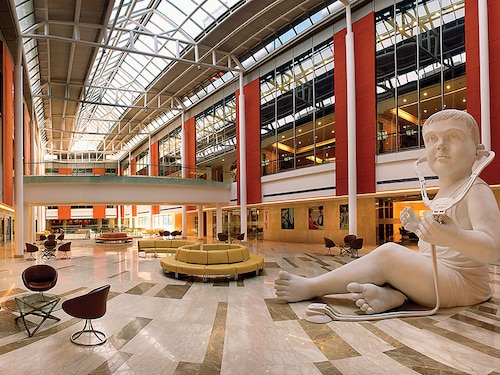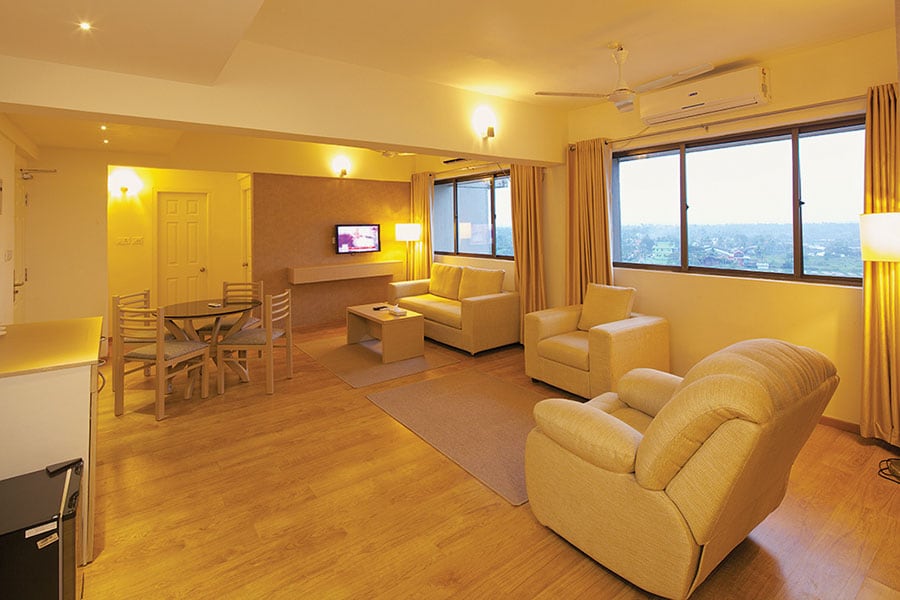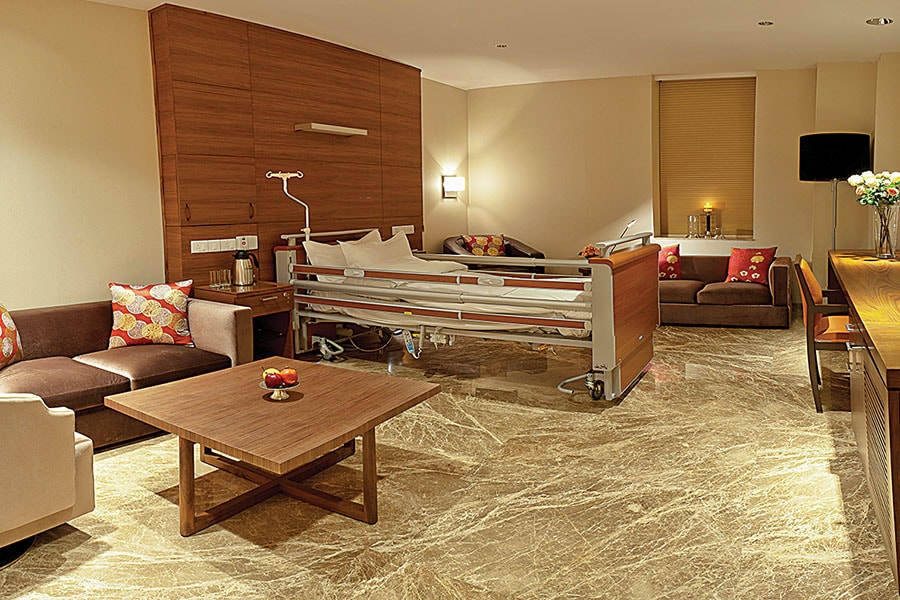Healing in style at luxury hospitals
They go beyond providing clinical excellence and now offer therapeutic care with facilities like yachts, salons and malls


The Fortis Memorial Research Institute in Delhi has expensive artworks, a dancing fountain, a mall, retail outlets and a lounge
India is in the middle of a health care revolution. On the one hand, the Narendra Modi government has unleashed one of the world’s biggest health care reforms through the recently launched Ayushman Bharat Pradhan Mantri Jan Arogya Yojana. Touted as the world’s largest government-funded health care programme, it aims to have more than 50 crore beneficiaries, providing health cover of up to ₹5 lakh per family per year, for secondary and tertiary care hospitalisation.
On the other hand, there are well-established hospitals offering services that were unimaginable a few decades ago, as wealth in Asia’s third-largest economy soars. These hospitals are targeting India’s uber rich through a slew of luxurious offerings that include everything from pick-ups to lounges and even yacht rides.
Take, for instance, New Delhi-based Fortis Memorial Research Institute whose offerings include some of the most expensive artworks, a dancing fountain, a mall, retail outlets and a lounge to relax in. There is also a café and food court in the hospital that is spread across 12 acres it is estimated to have cost around $84 million (₹500 crore).
“Very often, when we think of hospitals, the idea is clinical excellence,” says Ritu Garg, zonal director at Fortis Memorial Research Institute. “What we often tend to forget is the care aspect. That’s what we are trying to focus on.” At the Fortis Institute, there are separate floors, known as signature floors, where room rates vary from ₹30,000 to ₹3 lakh a day. “These are rooms where an entire family can shift to during the course of the treatment,” says Garg. Fortis also offers luxury vehicles to bring in patients and prides on itself as a centre of excellence.  A room at Aster Medcity which offers mesmerising views of the backwaters of Kochi Others like Kochi-based Aster Medcity offer yachts to consumers to take them to the sea for therapeutic healing it even has retail outlets within the campus. There are also dry cleaning stores, salons and mesmerising views of the backwaters of Kochi. “Our entire hospital is built around the theme of therapeutic healing with a view of the calm backwaters,” says Harish Pillai, CEO of Aster Medcity. “When you enter the hospital, we don’t want you to feel like it’s a hospital.” The hospital also has warm lighting and hardwood floors, giving it a touch of luxury.
A room at Aster Medcity which offers mesmerising views of the backwaters of Kochi Others like Kochi-based Aster Medcity offer yachts to consumers to take them to the sea for therapeutic healing it even has retail outlets within the campus. There are also dry cleaning stores, salons and mesmerising views of the backwaters of Kochi. “Our entire hospital is built around the theme of therapeutic healing with a view of the calm backwaters,” says Harish Pillai, CEO of Aster Medcity. “When you enter the hospital, we don’t want you to feel like it’s a hospital.” The hospital also has warm lighting and hardwood floors, giving it a touch of luxury.
The recent surge of luxury hospitals, with their exceptional offerings, has come at a time when there is a serious dearth of doctors in the country. Nearly 80 percent of India’s 1.04 million registered doctors who practice modern medicine are based out of cities that are home to 31 percent of the population. But India’s rural population, that is heavily dependent on government health care services, faces a considerable shortage, making the doctor-population ratio in the government health sector 1:11,082, as against the World Health Organization’s recommended 1:1,000.
But with India’s health care market likely to see a three-fold increase to $372 billion by 2022 from $110 billion as of 2016, hospitals are seeing huge potential for offering luxury services. The Fortis Institute has signature floors (top) where room rates vary from ₹30,000 to ₹3 lakh a day “India is a land of extremes,” says Garg. “Both services have to coexist. What we are trying to do is cater to the growing number of foreigners coming to India, and a select population that does not want to go abroad for treatment.” To make life easier for foreign nationals and the rich, who aren’t comfortable with long-drawn processes at hospitals, many have also begun offering services such as single point of contact. They ensure patients have a seamless journey during their hospital trip.
The Fortis Institute has signature floors (top) where room rates vary from ₹30,000 to ₹3 lakh a day “India is a land of extremes,” says Garg. “Both services have to coexist. What we are trying to do is cater to the growing number of foreigners coming to India, and a select population that does not want to go abroad for treatment.” To make life easier for foreign nationals and the rich, who aren’t comfortable with long-drawn processes at hospitals, many have also begun offering services such as single point of contact. They ensure patients have a seamless journey during their hospital trip.
India’s medical tourism sector is expected to grow to $10.3 billion in 2020, from $2.8 billion now, according to consultancy firm PwC. Much of the surge in medical tourism also stems from the fact that India is a haven for cheaper treatment. These include treatments such as bone-marrow transplants, cardiac bypass surgery, eye surgery and hip replacements. For instance, a hip replacement surgery is likely to cost one-fifth of what it would cost in the US, and about half the cost in Singapore.
“I would think that all of these are essentially marketing techniques,” says Dhanraj Chandriani, managing director of Techneon Healthcare, a Mumbai-based health care consultancy. “There might be some people who come to India for treatment and these offerings might work with them. But the Indian population who can afford such services is very little. Many Indians choose to go abroad for treatment, not for luxury. It is due to the confidence they have in the treatment given abroad.”
Chandriani also reckons that the fad of luxury hospitals in the country will eventually die down. “What people want is good care. The focus should be on offering patient-friendly practices and a home-like environment,” he says.
But in a country where opulence is a way of life, luxury might just end up being a parameter for good hospital care.
First Published: Oct 15, 2018, 12:42
Subscribe Now